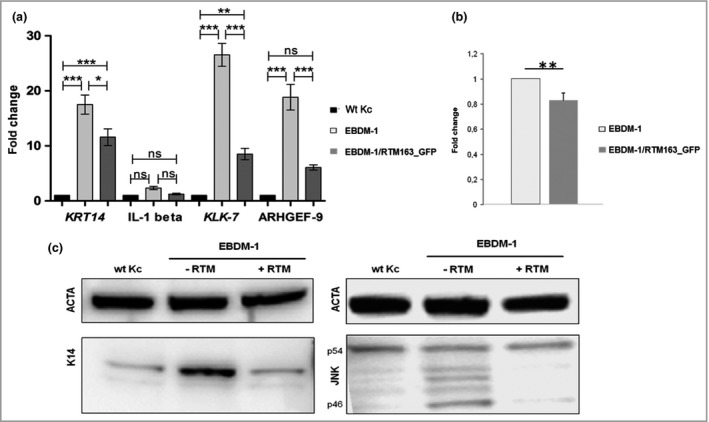Figure 3.

Impact of trans‐splicing on molecular players involved in the pathomechanism of generalized severe epidermolysis bullosa simplex. (a) Semiquantitative reverse‐transcriptase polymerase chain reaction: downregulation of KRT14,IL1B,KLK7 and ARHGEF9 mRNA in EBDM‐1/RV‐RTM163_GFP compared with untreated EBDM‐1 keratinocytes. Data represent the means and SDs of four (IL1B,KLK7) or five (KRT14,ARHGEF9) independent experiments, one‐way anova: ***P < 0·001; **P < 0·01; *P < 0·05; ns, not significant. Wt Kc, wild‐type keratinocyte. (b) Luciferase assay. Upon trans‐splicing, the luciferase signal decreased significantly in EBDM‐1/RV_RTM163 keratinocytes compared with EBDM‐1 cells (n = 5). Statistics: two‐sided independent Student's t‐test; **P < 0·01. (c) Western blot analysis: RNA trans‐splicing molecule (RTM)‐corrected EBDM‐1 cells show similar levels of keratin 14 (K14) expression and c‐Jun N‐terminal kinase (JNK) phosphorylation (especially the p46 variant) compared with normal. ACTA, α‐actin control.
